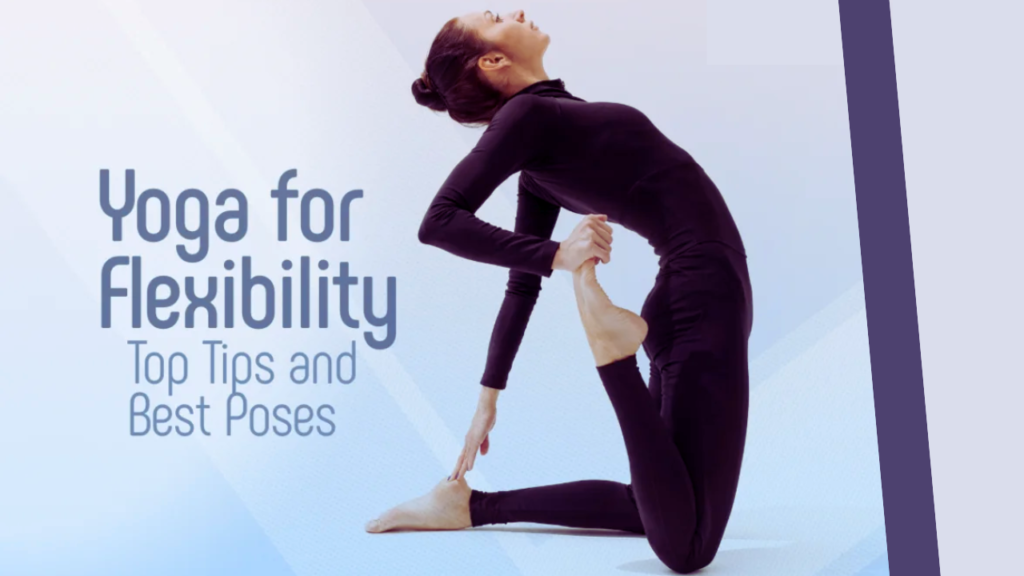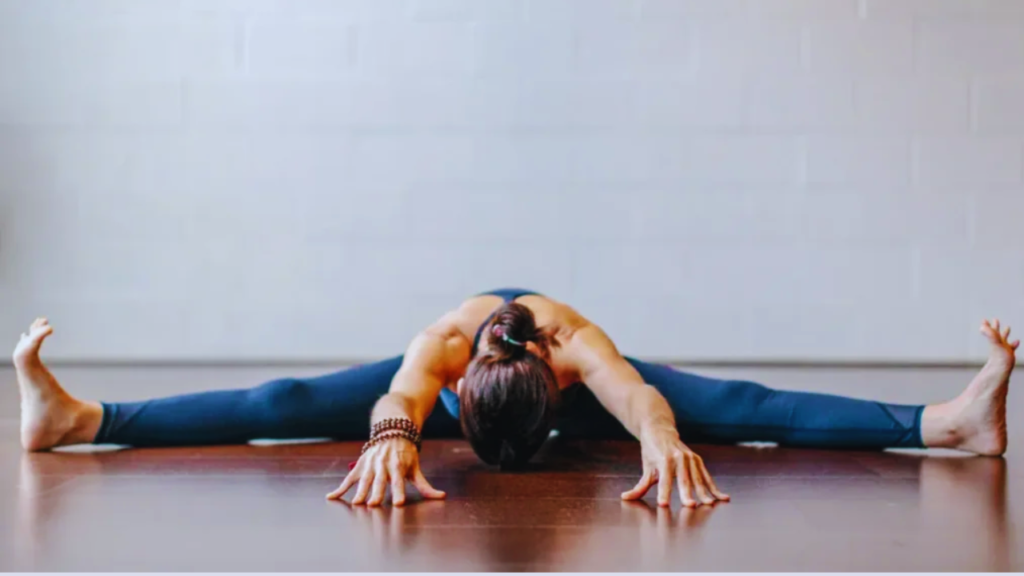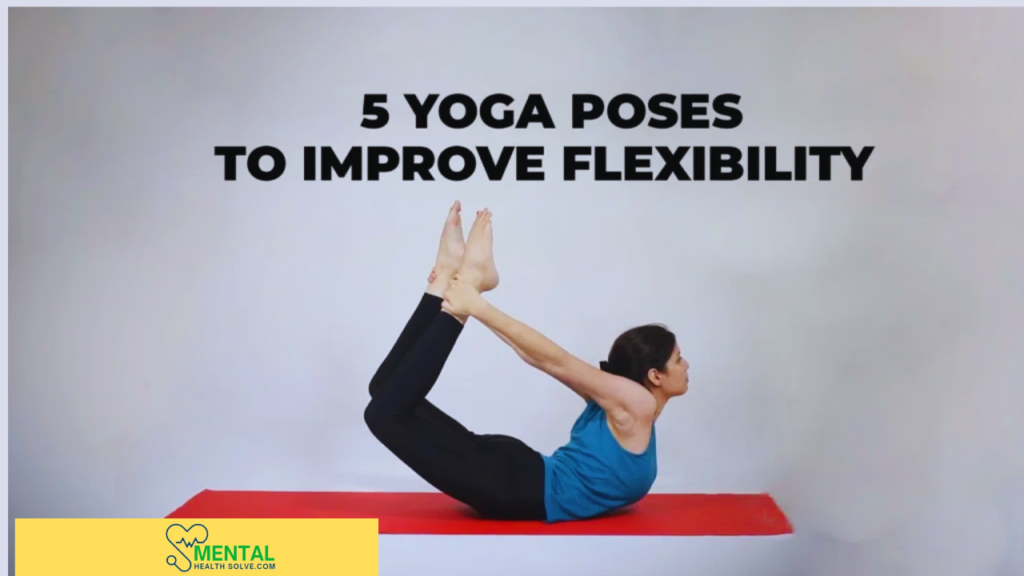
Flexibility in yoga can be seen as both a blessing and a challenge. On the positive side, increased flexibility offers significant benefits, such as improving joint health and range of motion, which can help prevent sports-related injuries, back pain, and repetitive strain injuries.
However, yoga is much more than just flexibility. People who are naturally very flexible should be cautious not to jump into advanced poses too quickly. They often need to focus on building strength to support their flexibility, develop supporting muscles, and ensure they maintain safe alignment in their practice.
Many people avoid yoga due to a fear of not being flexible enough. It’s a common myth that you have to be generally flexible to start yoga. Let’s clear up that misconception about yoga for flexibility now. Yoga is for everyone, regardless of their current level of flexibility.
Yoga for Flexibility: Why It Is Important?

Flexibility plays a crucial role in physical fitness. While most people focus on strength and cardio exercises, they often overlook flexibility until they experience injury or pain. When these issues arise, the solution often involves stretching tight muscles that restrict movement and strain vulnerable areas such as the joints.
I should also highlight the mental benefits of becoming more flexible. Stretching improves flexibility and makes you feel great. It helps release tension, reducing stress. As your body relaxes, your mind follows suit.
Releasing physical tension also helps release mental tension. This is why yoga is effective in lowering stress, improving sleep, and boosting overall well-being.
How Much Time Does It Take to Improve Flexibility?
Why rush? Like all the advantages of yoga, increased flexibility comes with time and regular practice of various poses. The earlier you begin, the sooner you will notice changes, but it’s hard to set a specific timeline because many factors are involved. Your starting point and other activities matter, too.
For instance, running a lot or sitting for long periods can lead to tight hamstrings. How often you practice yoga, the type of yoga you choose, your body type, and other factors also play a role. One thing is certain: practicing yoga consistently will enhance your flexibility. If you don’t start, you won’t see any progress.
Doing classes on Yoga for flexibility is helpful because it offers expert guidance on safely increasing flexibility and using props when needed. If you’re worried about your lack of flexibility in a group class, you might fear being the least flexible person there. Remember that no one is judging you. If someone does point it out, it is best to look for a different class.
Top 5 Poses of Yoga for Flexibility

The most effective poses of yoga for flexibility are those practiced consistently. I have already highlighted some important muscle groups where tightness is common, such as the shoulders, hamstrings, and hips. The yoga poses below focus on these areas.
Yoga poses often stretch multiple areas at once, so you will also benefit from stretching your pectorals, calves, intercostals, and quads, among others. When needed, I have included tips on using props to make poses easier or to deepen the stretch.
- Downward Facing Dog Pose
Downward Facing Dog is an important pose of yoga for flexibility. This pose benefits the entire body, especially by stretching the calves and hamstrings along the back of your legs.
Instructions on doing this pose:
- Start on your knees and hands, positioning your knees a little behind your hips.
- Tuck your toes underneath and lift your knees off the ground.
- Raise your hips towards the ceiling by straightening the legs.
- Alternate bending each knee to pedal your feet.
- Hold the inverted V shape for at least five breaths, pressing firmly into your palms and staying relatively still.
- Reclined Hand to Big Toe Yoga Pose
There are many ways to modify this pose, with one of the most common being the use of a strap around the arch of the raised foot. If you do not own a yoga strap, a belt works just as well, or you can simply hold your leg’s back. Focus on holding your leg as straight as you can to effectively stretch your hamstrings, groins, calves, and hips. Do not worry about how high your leg goes.
Instructions on doing this pose:
- Start by lying on the back with your knees bent and your feet flat on the ground.
- Pull your right knee towards your chest. You can either grip your big toe or tie a strap around your foot.
- Stretch your right leg directly up towards the ceiling.
- If possible, expand your left leg along the ground. However, it is fine to keep it bent.
- Engage both feet by flexing or pointing them.
- Place a hand on your left thigh to help keep that hip grounded on the mat.
- Ensure that both your right upper arm bone and right thigh bone stay settled in their sockets.
- Hold for 5-10 breaths, then switch to the left leg and do it again.
- Child’s Pose
The child’s pose is a calming position that encourages spinal flexion and stretches your shoulders and back. Also, it is a great exercise to include at the end of your usual workouts.
Instructions on doing this pose:
- From a tabletop position on all fours, move your hips back towards your heels. You can keep your legs together or apart.
- Lean forward over your thighs and rest your forehead on a cushion or the floor.
- Place your arms by your sides with your palms facing up.
- Stay in this position for a few breaths.
- Crescent Lunge
Think of Crescent Lunge as a customizable pose. You can choose to lunge deeply into your front hip or keep it aligned over your knee. Lifting your arms towards the ceiling helps stretch the muscles between your ribs, known as the intercostals. If you want, you can reach back for your rear foot to include a quad stretch. Select the variation that suits you best.
Instructions on doing this pose:
- From the Downward Facing Dog pose, step your right foot forward, placing it inside your right hand. If it doesn’t reach all the way, use your hand to help it forward.
- Lower the left knee to the mat. If your knees are sensitive, consider using a yoga pad for extra cushioning.
- Inhale and raise your arms overhead, reaching for the ceiling while keeping your shoulders relaxed and away from your ears.
- To deepen the hip stretch, move your right knee forward as much as you need.
- For a quad stretch, raise your left heel towards the left glute. Reach your right arm back to grab your left ankle or foot, pulling it towards your butt.
- Hold your final pose for 3-5 five breaths, then switch to the other side.
- Cat-Cow Pose
The Cat-Cow pose is a gentle yoga stretch that is ideal for beginners. It helps you become aware of your breath, tune into your feelings, and provides a full back stretch to enhance spine mobility.
Instructions on doing this pose:
- Begin on all fours in a tabletop position, aligning your wrists with your shoulders and your knees under your hips, spaced hip-width apart. Spread your fingers wide and press them into the floor.
- For the Cat yoga pose, inhale as you gaze forward, lowering your belly towards the floor and lifting your sitting bones.
- Exhale into Cow Pose by rounding your spine, tucking your chin to your chest, and drawing your sitting bones under while pressing your hands into the floor.
- Repeat these movements five times, matching each motion with your breath.
Is Practicing Yoga for 10 Minutes A Day Sufficient?

Practicing yoga for flexibility regularly, even in small amounts, is essential for gaining its benefits. Research posted in the Human Factors journal in 2023 indicated that a 10-minute daily yoga session can be beneficial.
The research showed that practicing yoga for just 10 minutes each day helped reduce physical discomfort and boost the mood of individuals working from home. Consistency is key with yoga, so fitting in 10 minutes daily is more effective than doing longer sessions once each week or every two weeks.
Conclusion
If you want to do yoga for flexibility, then these poses are a great place to start. However, it is important to remember that yoga’s true power lies in its holistic approach, benefiting both body and mind. Yoga is one of the most effective methods to boost flexibility and improve various aspects of mental and physical health.
In reality, every yoga pose contributes to flexibility. Yoga poses can aid in recovery after a workout or run and are excellent for easing stiffness. They also offer calmness and relaxation, positively impacting your mind and overall well-being.
